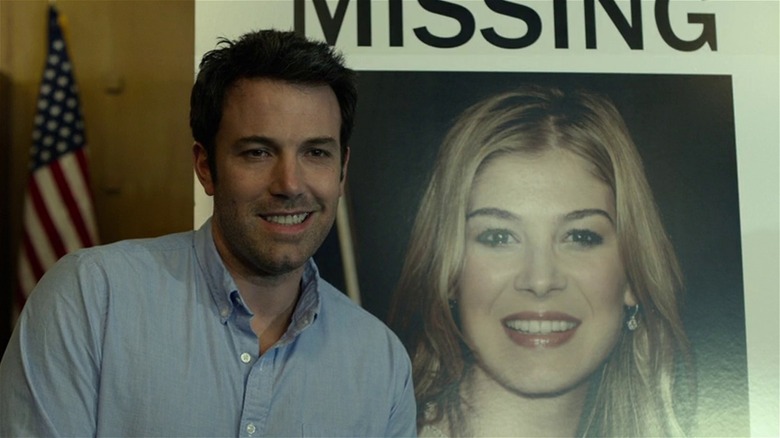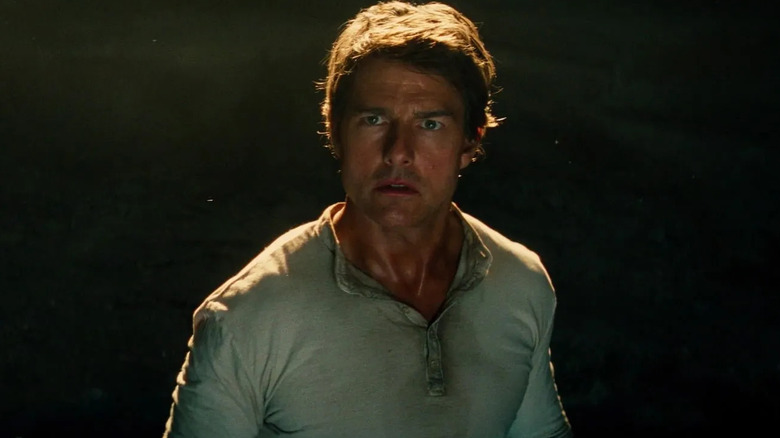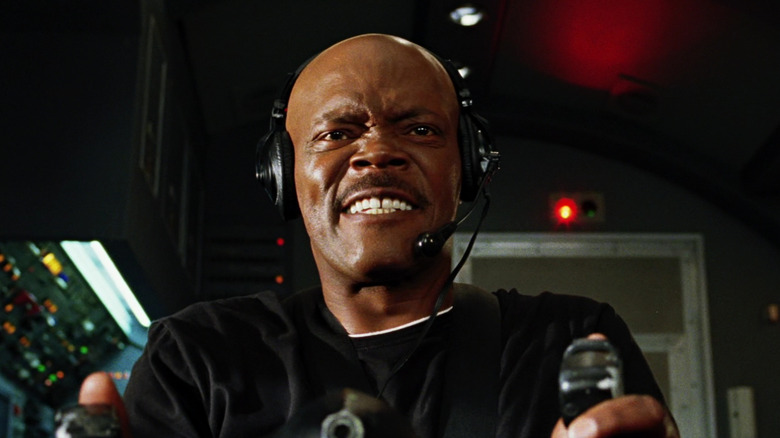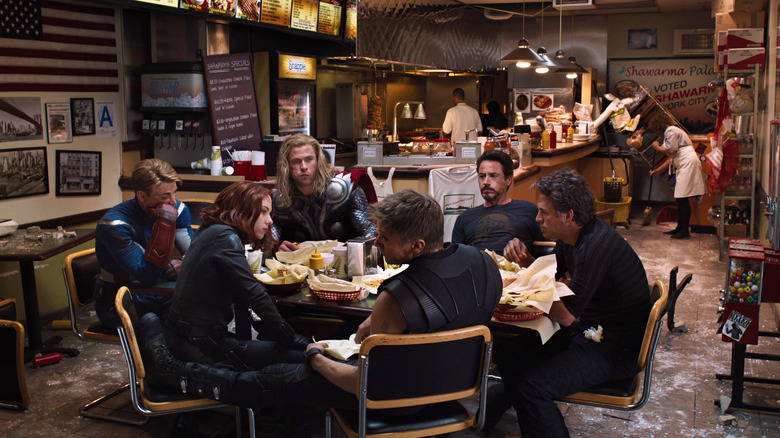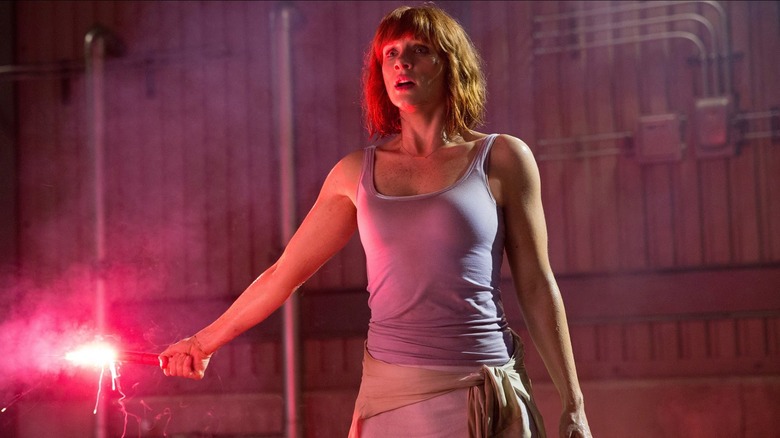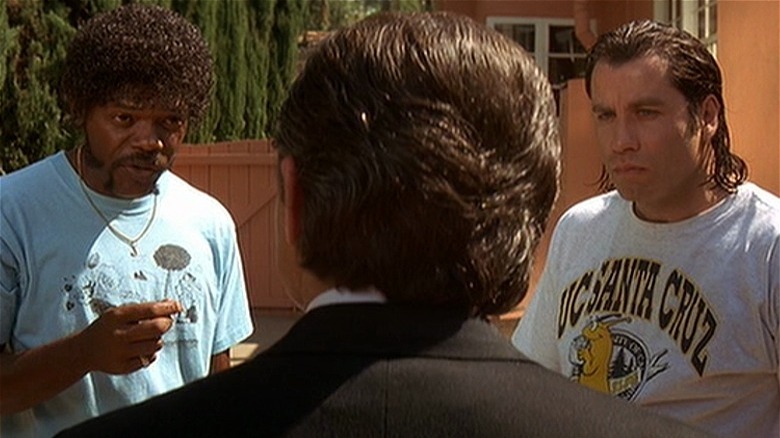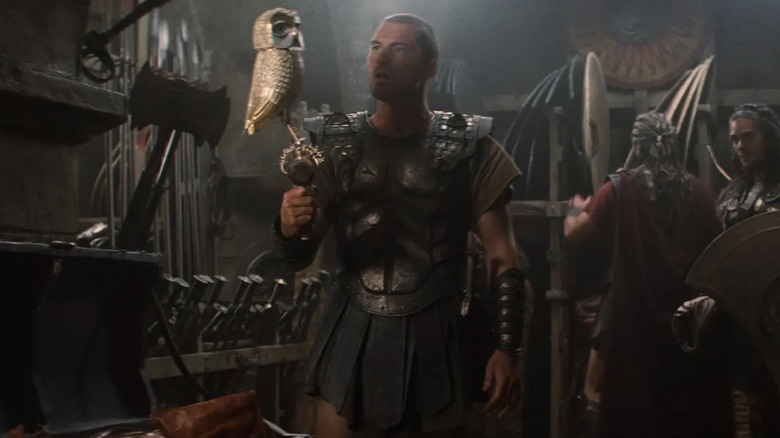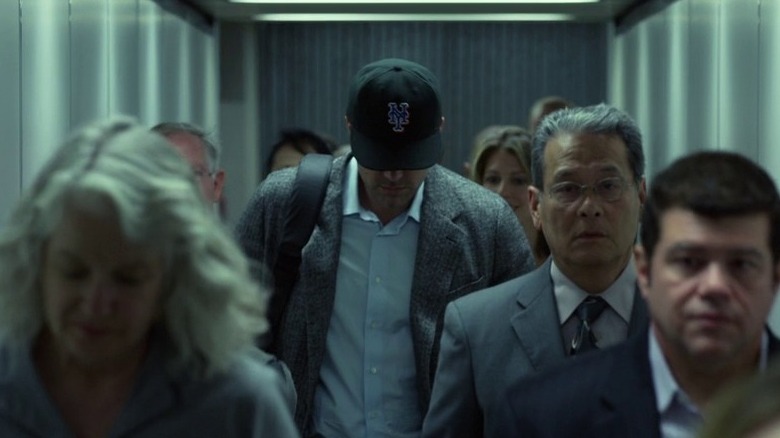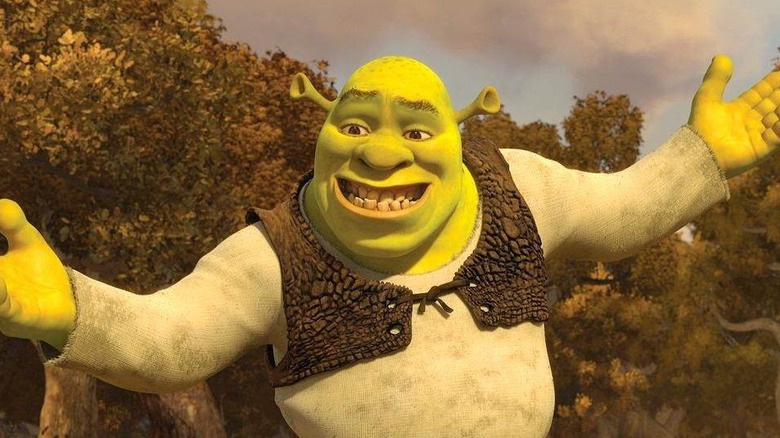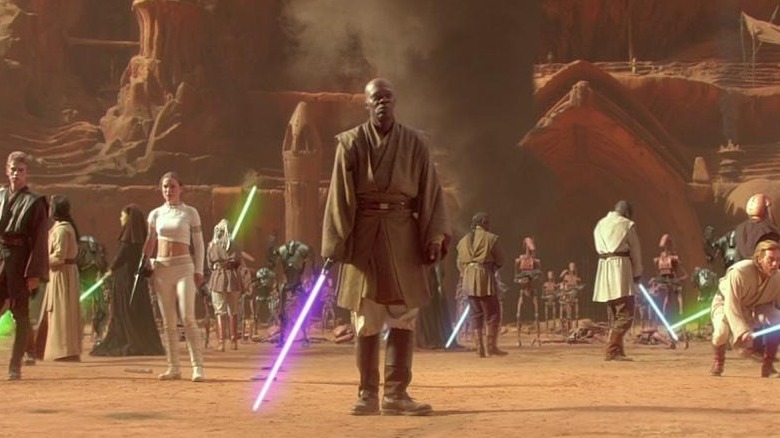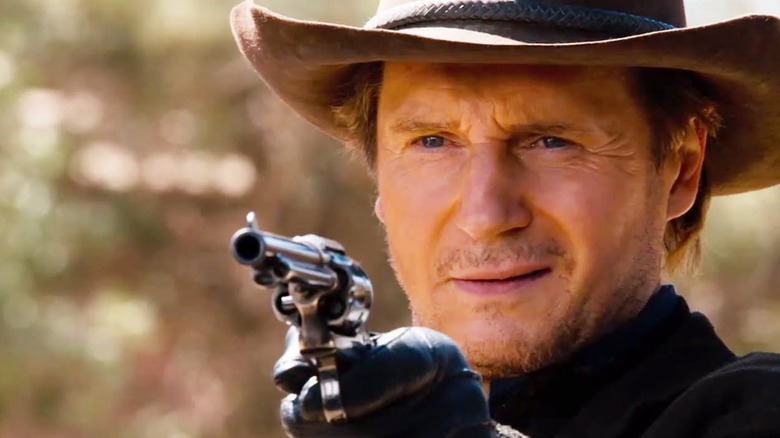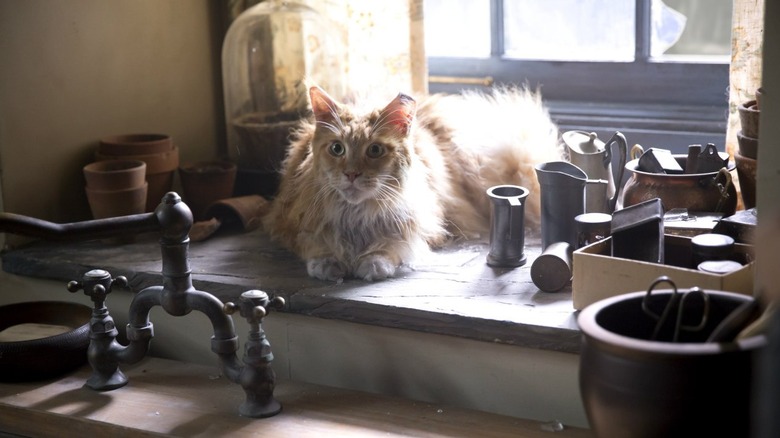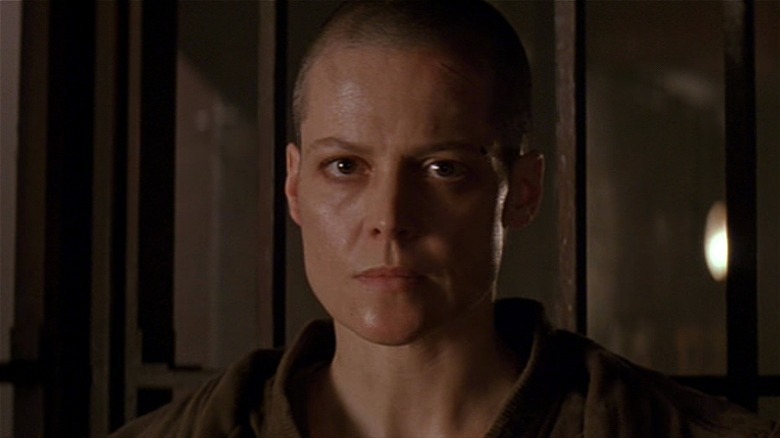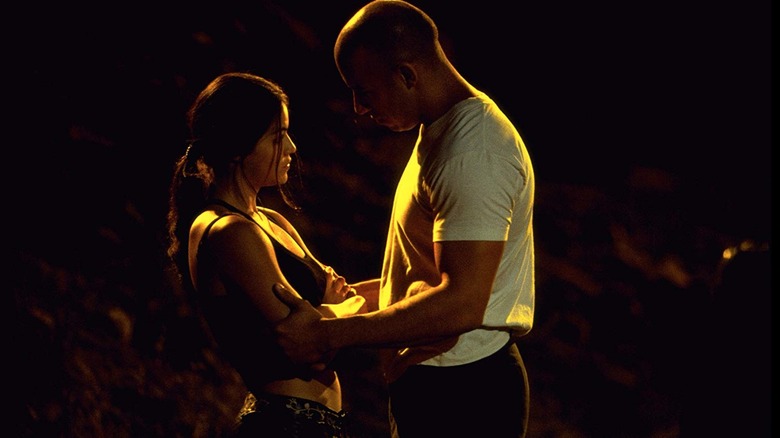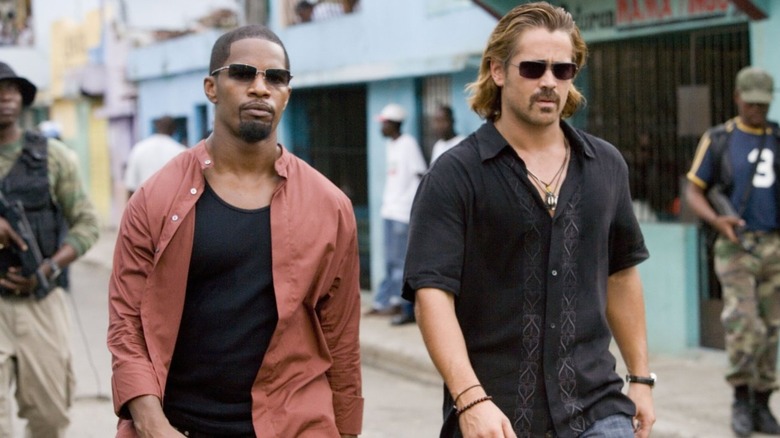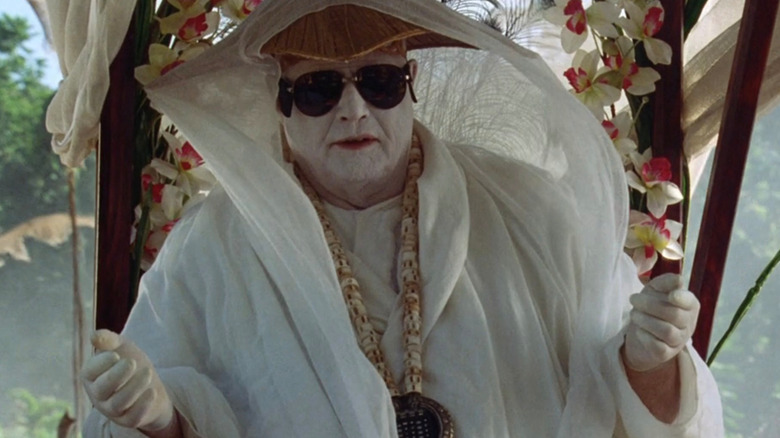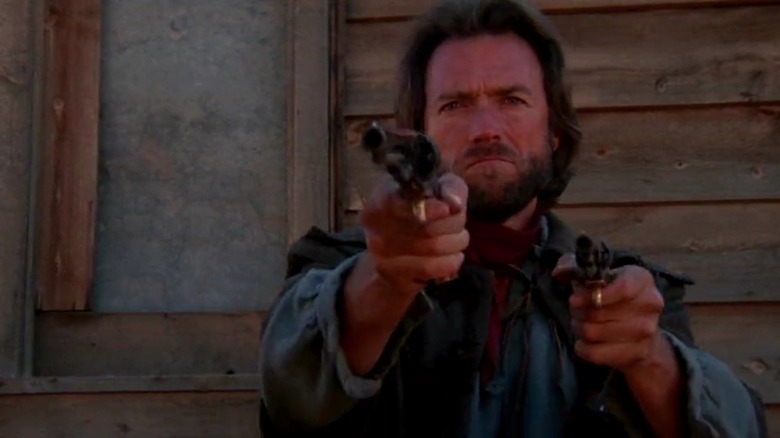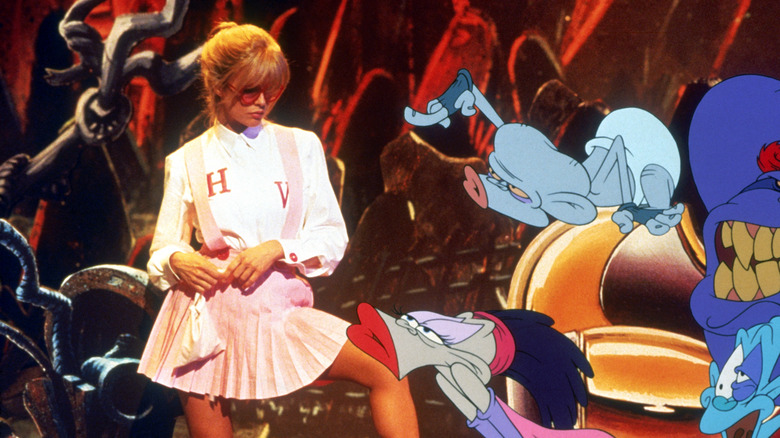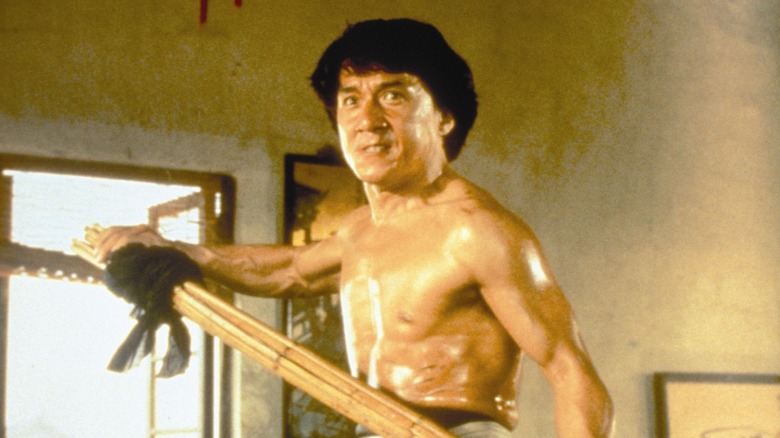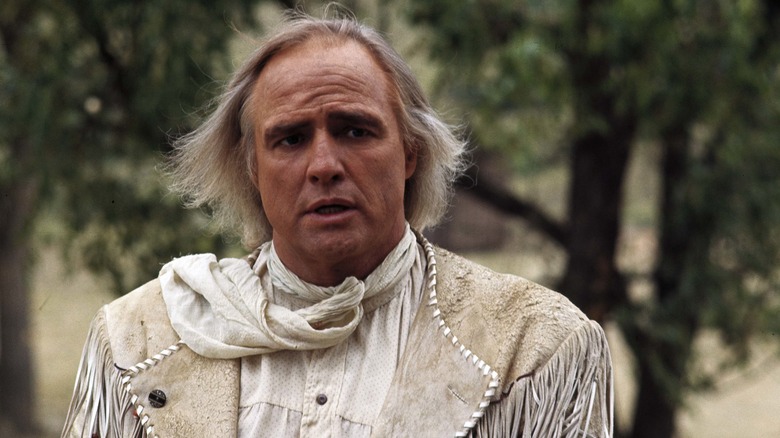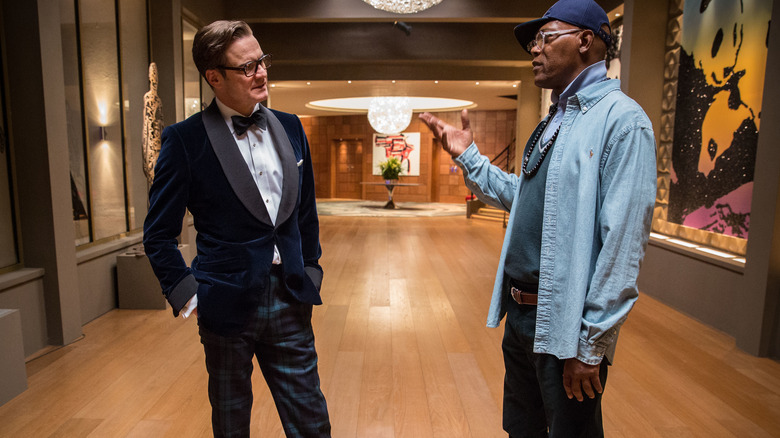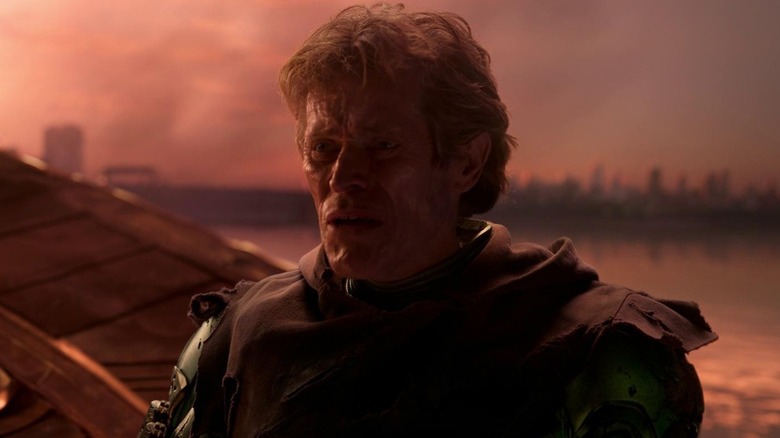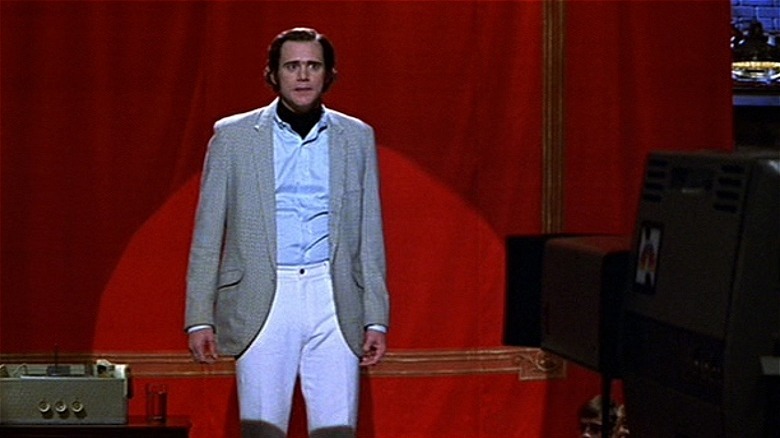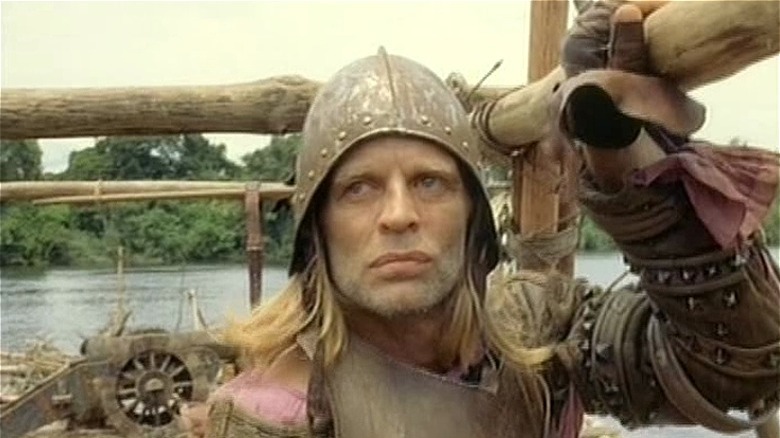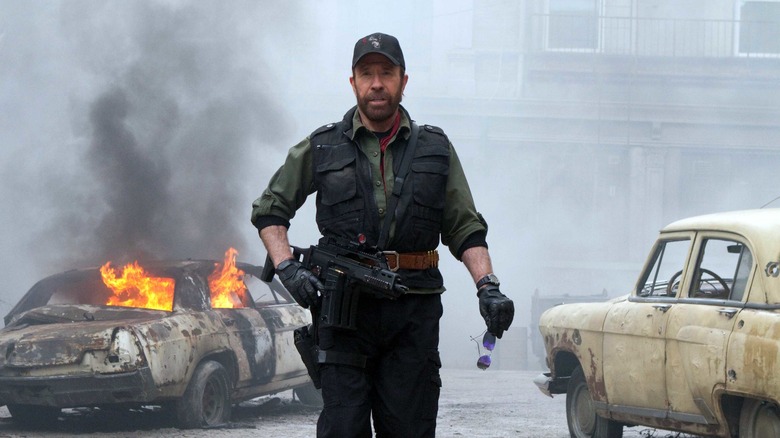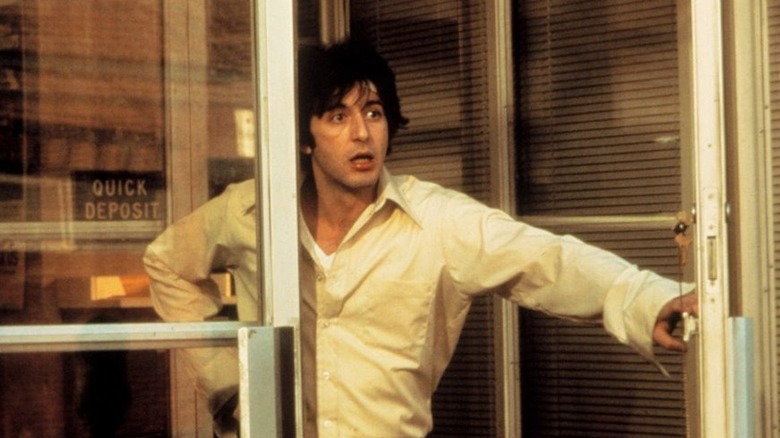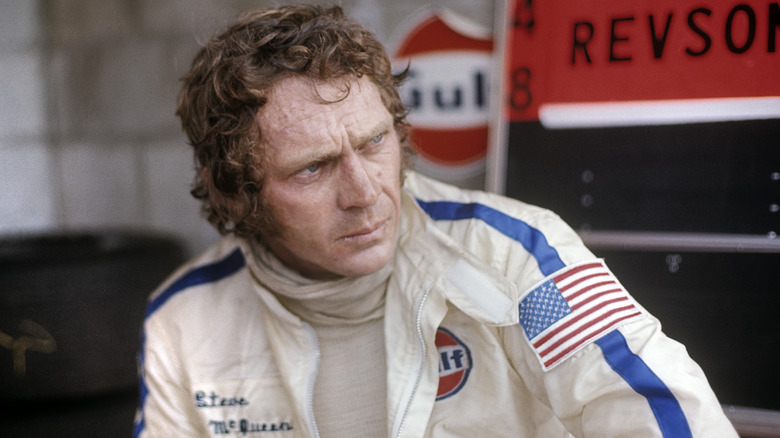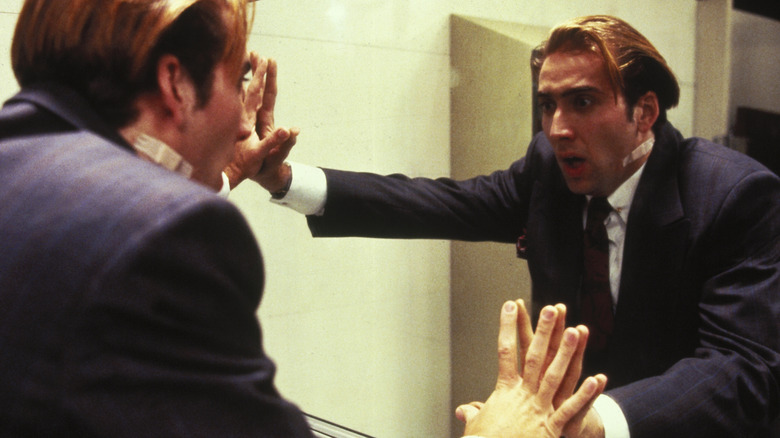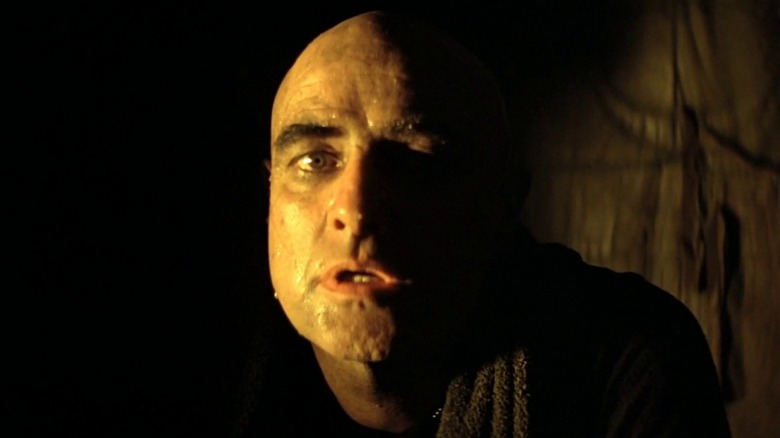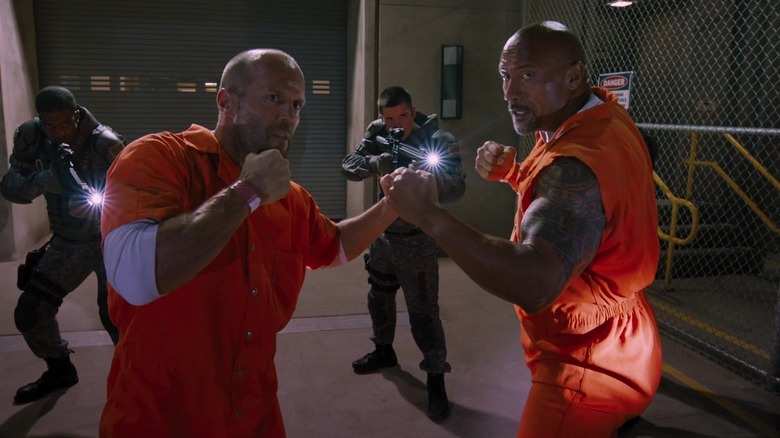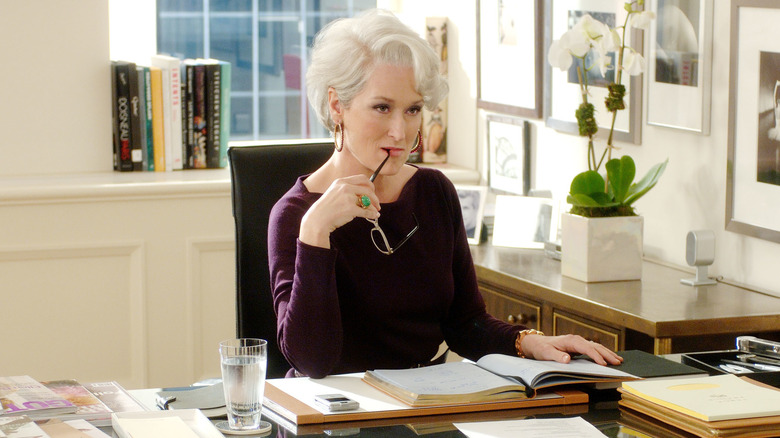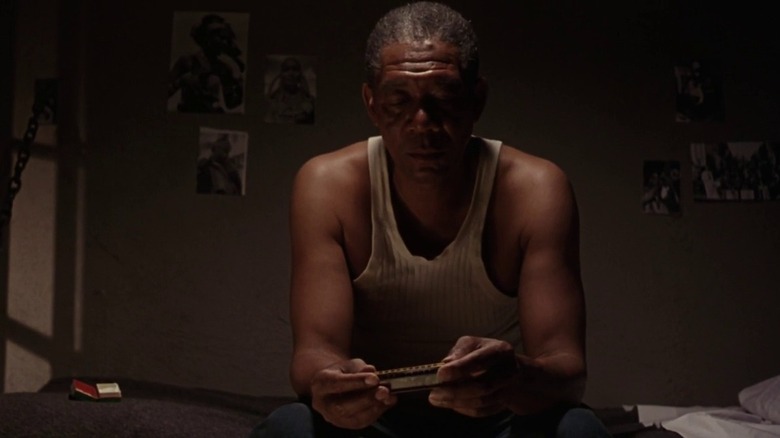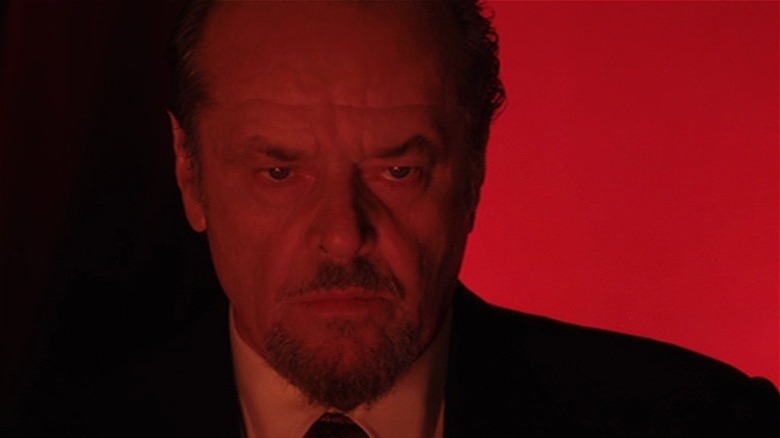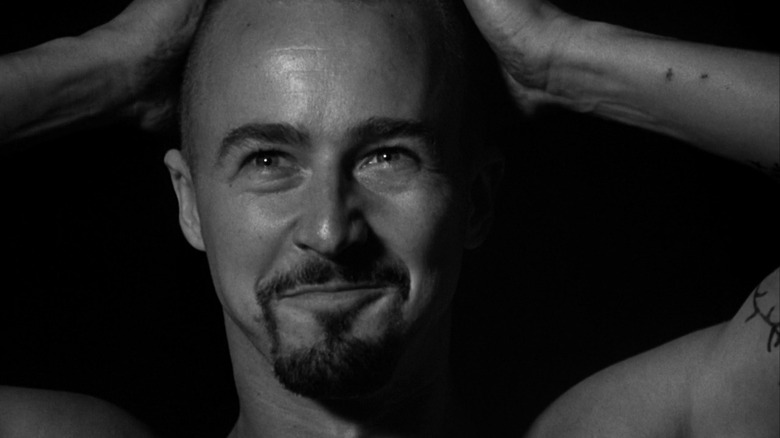Actor Demands That Changed Movie Details
When actors reach a certain level of fame, with it comes the ability to shape a movie to their own whim, whether it's because they've built up an impressive level of experience or simply because of their sheer star power. It's the type of thing that happens in every office around the world, but when movie stars do it, audiences get to see the impact of their decisions. Sometimes these changes barely affect the movie—minor scene alterations, for example, or a different take on the delivery of a line. Sometimes, however, they can completely change the final product—for better or worse. We've gone behind the scenes of some of your favorite films to ferret out the stories of the many ways in which a star wanted something that wasn't originally in the script—and got their way. Here are some of the most memorable—and often amusing—examples of movies that were significantly altered by actors' demands.
The Mummy (2017)
When you've got as much clout as Tom Cruise, you can make all sorts of stipulations when you sign on for a movie—and reportedly, Cruise's demands for the 2017 Mummy movie included near-total creative control. As later outlined in a Variety investigation, Cruise was accused of micro-managing almost every aspect of the film's production, changing everything from the script to the way it was marketed. Cruise's track record at the box office meant these changes were approved by Universal, despite some internal doubts.
Perhaps most notably, Cruise allegedly insisted that his character, Nick Morton, be given more screen time than the mummy. According to one source, the original script had Morton sharing "nearly equal screen time" with the undead villain, which apparently didn't sit well with Cruise; his presence was beefed up accordingly, effectively turning the horror franchise reboot into another of the star's blockbuster action vehicles. Ultimately, audiences might have preferred less Cruise and more mummy—the movie was a major flop.
Snakes on a Plane (2006)
Stars have all sorts of reasons for agreeing to take a role. Samuel L. Jackson, for example, admitted he only wanted to star in Snakes on a Plane because of its title—which he loved so much that when executives considered changing it to Pacific Flight 121, he personally intervened, telling them it was "the stupidest damn thing I ever heard."
Jackson also advocated for more violence and profanity, an issue because the studio envisioned Snakes as a campy PG-13 action movie. Eventually, they agreed with his more adult-oriented take and he agreed to re-shoots to secure an R rating—partly for the fans who'd already started freaking out over the idea of a Samuel L. Jackson movie titled Snakes on a Plane, and partly because that's what he'd wanted anyway.
The Avengers (2012)
In the original script for The Avengers, the scene immediately following the near-defeat of the Chitauri was much less light-hearted, with Tony Stark simply asking "What's next?" after being roused by his comrades. Robert Downey Jr. felt this line fell a little flat and suggested trying something different, workshopping a better version of the scene with Joss Whedon.
According to Entertainment Weekly, Whedon put together three pages of new lines based on Downey's suggestion, and in the newly revamped scene, Iron Man has a little more banter with his teammates before suggesting they all go for shawarma, a random line that ended up being the cast's favorite—in fact, everyone liked the line so much that just before production wrapped, a bonus post-credits scene was filmed of the entire cast eating.
Jurassic World (2015)
Jurassic World earned largely positive reviews—and a whole lot of money—but more than a few critics and fans complained that Bryce Dallas Howard's character somehow outruns 22 tons of T-rex in high heels. Director Colin Trevorrow was keenly aware of how ridiculous this was, and reportedly spent much of the film's production trying to convince her to literally slip into something more comfortable. Howard staunchly refused, insisting that her character had to wear heels while outrunning that giant dinosaur.
Trevorrow would later admit that he wasn't sure exactly why Howard was so insistent, but he respected her decision, musing that perhaps Howard "felt like surrendering the heels felt like surrendering the femininity of the character." Howard herself would later say she never expected wearing the heels to be such a major talking point, but she was happy to have the effort she put into running through the jungle acknowledged, noting that no camera trickery was used—she really did wear the shoes in every scene.
Pulp Fiction (1994)
According to the original script for Pulp Fiction, everyone's favorite Bible-quoting hitman with a heart of gold, Jules (Samuel L. Jackson), was supposed to sport a giant Afro that would stand in contrast to the slicked-back hair of his cohort Vincent (John Travolta). However, according to Jackson, the person sent to buy a wig had no idea what an Afro was, and returned from the store with one styled into a Jheri curl—something that infinitely amused the star.
Rather than insisting on a replacement, Jackson decided to just roll with it, with the actor later telling MTV that as soon as he put it on he knew that's the way the character had to look. As he told writer-director Quentin Tarantino, "this is Jules."
Clash of the Titans (2010)
Bubo the clockwork owl is one of the most memorable parts of the original Clash of the Titans, so naturally, director Louis Leterrier planned on making it a major part of his 2010 remake. Unfortunately, star Sam Worthington hated Bubo: Leterrier later recounted that Worthington complained about the owl at every opportunity and repeatedly threatened to punch it, going as far to accuse the director of trying to ruin his career by making him star opposite something so ridiculous. Leterrier goaded Worthington by saying he wasn't trying to ruin his career, just damage it—which didn't exactly help matters. Ultimately, to appease his star, Leterrier completely excised the owl from the film, relegating it to a brief cameo.
Gone Girl (2014)
According to the DVD commentary recorded for Gone Girl, the script called for Ben Affleck's character to try and hide his identity by donning a Yankees cap. Affleck, a lifelong Red Sox fan, absolutely refused to do this—and shut down production for four days over the disagreement.
Director David Fincher tried and failed multiple times to convince the actor to change his mind, each time being told that Affleck's friends would never let him live it down if footage existed of him wearing a Yankees hat. As Affleck told the New York Times, he said to Fincher, "David, I love you, I would do anything for you. But I will not wear a Yankees hat." Fincher finally relented and suggested a compromise—a Mets hat.
Shrek (2001)
Shrek's signature Scottish brogue went through a couple of major changes before audiences fell in love with the big green ogre. Saturday Night Live vet Chris Farley was originally supposed to voice the character, but died before he could finish recording his lines; after his passing, Farley's fellow SNL alum Mike Myers stepped in. It wasn't until after roughly a third of the movie had been animated, however, that Myers decided Shrek should be Scottish.
Myers' reasoning was that since the movie's villain, Lord Farquaad, spoke with an upper-class English accent, Shrek should sound more blue-collar, to highlight the difference between them. He also felt that the Scottish accent lent itself better to dramatic, abrupt shifts in tone and would allow him to emote in a more exaggerated fashion.
DreamWorks exec Jeffrey Katzenberg pegged the cost of reworking the already animated scenes at $4 to $5 million—roughly 10 percent of the movie's overall budget. Understandably reluctant to part with that kind of money but willing to trust his star's process, he agreed—and the rest is blockbuster franchise history.
Star Wars: Episode II - Attack of the Clones (2002)
After watching a rough cut of the Battle for Geonosis with Star Wars creator George Lucas, Samuel L. Jackson noticed it was hard to spot his own character, Mace Windu, amongst the dozens of Jedi on screen, and he asked Lucas if it'd be possible for Windu to wield a purple lightsaber—partly because it'd stand out more, and partly because purple is Jackson's favorite color.
Lucas initially turned down the request, explaining that lightsabers are generally only a handful of colors due to how they're made. Jackson countered by saying "I'm like the second baddest Jedi in the universe next to Yoda," presumably before pointing out to Lucas that the entire Star Wars universe existed in his head so he could make whatever changes he damn well felt like. This apparently swayed Lucas, who made the change—and later wryly noted to Jackson that his idea had "caused a [mess] online."
A Million Ways to Die in the West (2014)
Family Guy has mocked a lot of people over the years—and it came back to haunt creator Seth MacFarlane when he asked Liam Neeson to star in his comedy western A Million Ways to Die in the West. Years earlier, Family Guy had made a joke about how stupid it would be for Neeson to play a cowboy in a western because of his inability to convincingly mask his distinctive Irish accent. Neeson pointed this out to MacFarlane before stating that his singular condition for appearing in the film was that he speak in a broad Irish accent throughout.
MacFarlane agreed and as a result, Neeson speaks with his natural accent the entire time he's on screen—all because of a throwaway line in an old episode of Family Guy suggesting that it'd be pretty stupid for anyone to hire Liam Neeson to star in a western.
The Hunger Games (2012)
In the Hunger Games novels, Buttercup the cat is described as "hideous-looking" with a muddy yellow coat, half an ear missing, and eyes the color of rotten squash. It's a pretty distinctive description, which is why fans were kind of miffed when a black and white cat played the animal in the first Hunger Games movie. According to producer Nina Jacobson, she knew immediately that fans would be annoyed by the mistake, going as far as suggesting using digital effects to edit in a new cat in post-production. The studio shot down the idea, of course.
As Jacobson expected, soon after the film's release fans complained about the error, with author Suzanne Collins personally expressing her annoyance in interviews. After seeing the reaction from fans and the author, the studio quietly recast the cat, although as director Francis Lawrence pointed out, not everyone was happy with the change. "It's funny because now people are split," he shrugged. "Some people think we should have continued on with what happened in the first movie. And some people are really happy. You never win."
Alien 3 (1992)
It's hard to believe today, but Alien 3 was once the most despised entry in the franchise. Even director David Fincher has disowned it, saying "no one hates it more than me." Ouch, David.
But given where the franchise has gone since (exhibits A, B, C, D and E), Alien 3 is...well, still a pretty bad movie, but hardly the worst. One person who foresaw where the franchise was headed and didn't like it: Lt. Ellen Ripley herself, Sigourney Weaver, who heard that the Alien franchise was evolving into a spinoff/crossover series, Aliens vs. Predator. While the eventual film didn't come out until 2004, plans were already underway as early as 1992. She wasn't happy.
"I heard that Fox was gonna do Alien vs. Predator. Which really depressed me because I was very proud of the movies", Weaver told London Film and Comic Con in 2015. Who can blame her? Alien and Aliens are masterpieces, and Aliens even earned Weaver an Oscar nomination. The prestige sci-fi franchise descending into a schlocky cash grab undermined everything the series stood for. While Weaver couldn't stop Fox, she did the next best thing: demand Ripley die. Though marred by a mediocre movie, Ripley's sacrifice by plunging into a fiery inferno is one of the most heroic and emotional deaths in movie history... until Weaver returned as Ripley's clone five years later in Alien: Resurrection.
The Fast & The Furious (2001)
The relationship between Michelle Rodriguez's Letty Ortiz and Vin Diesel's Dominic "Dom" Toretto is the heart (or should we say "engine"?) of the Fast & Furious franchise, but their love story nearly crashed right out of the gate. The Fast & The Furious was set to feature a love triangle between Dom, Letty and the late Paul Walker's Brian O'Connor. It was a formulaic, but understandable choice — what better way to create tension between two dudes than fighting over a girl?
But in Rodriguez's opinion, it was absolutely wrong. "They just followed the format without thinking about the reality of it," said Rodriguez. "Is it realistic for a Latin girl who's with the alpha-est of the alpha males to cheat on him with the cute boy? I had to put my foot down."
This took chutzpah. After all, Rodriguez wasn't a movie star at this point, and defiance could have gotten her fired or even sued. Thankfully, she had an ally in the film's star, Vin Diesel. "Vin was the first one to pull me to the side while I was crying, and he just looked at me and said, 'I got your back.' That was the beginning of the Letty fairytale."
And what a fairytale it was — the franchise earned a staggering $5 billion worldwide over its first eight installments, and behind all the money and muscle cars is Dom and Letty's love story. Almost makes you want to write a poem or steal a car.
Miami Vice (2006)
When notorious partier Colin Farrell is the most stable person on set, you've got problems. While Michael Mann and Jamie Foxx are known for being difficult, they got along well enough during Collateral to earn Foxx an Oscar nomination. However, Foxx also won an Oscar that year for Ray — and the ego that came with it. Foxx signed onto Miami Vice pre-Ray. Now with his new superstar power, he demanded private jets, a bigger salary, and to not shoot scenes on boats or planes. Maybe he'd never seen the '80s TV show that inspired the movie?
Things got really dicey when the production moved to the Dominican Republic, where security was tight and tensions were high. One night a local police officer allegedly approached the set and pulled a gun on a guard, who shot him. That was enough for Foxx, who bounced with his entourage, never to return.
"Jamie basically changed the whole movie in one stroke," a crew member said. Mann had endings planned for Paraguay and Miami, but Foxx's retreat to the States forced his hand. "It was like turning an oil tanker around on a dime," Mann said. "But the Miami ending worked out to be the better ending."
The Island of Dr. Moreau (1996)
When it came to making strange demands, Marlon Brando was the gift that kept on giving. Unless you were a director or co-star, in which case his whims could push you past the brink of your own sanity. While there are many examples of Marlon's madness to choose from, what makes Brando's bizarre behavior in The Island of Dr. Moreau so memorable is that he managed to make a weird movie even weirder.
Based on the H.G. Wells novel, Moreau has Brando playing the titular mad scientist, whose contribution to the field of bio-genetics is to create human-animal hybrids. If the storyline was already strange, Brando made it bonkers. He insisted that his character be allergic to the sun and caked in white makeup, creating the movie's most memorable visual. Brando also wore an ice bucket on his head, and when he took a liking to a two-foot-tall supporting actor, he demanded Moreau always appear with this identically dressed little person. Brando's demands turned what might have been a thought-provoking horror film into an eccentric expose of a movie star's hubris.
While Brando's madness dramatically changed the movie, it was co-star Val Kilmer's attitude that nearly broke director John Frankenheimer, who allegedly later vowed he wouldn't cast Kilmer again "even if I was directing a film called The Life of Val Kilmer." Maybe he could have cast Brando instead?
The Outlaw Josey Wales (1976)
Clint Eastwood is one of the most legendary stars in Hollywood history, with the awards and global praise to prove it. Even so, Eastwood's somewhat diva-like behavior on one of his most famous films did more than change a single movie — it helped change the entire American movie industry.
In 1976, Eastwood was at the pinnacle of his star power and had recently gotten into directing, with four films under his belt in only five years. His next film, The Outlaw Josey Wales, became the fifth, though not without controversy.
The film's original director, Philip Kaufman, was a slow, methodical perfectionist, who would do multiple takes to get the exact shot he wanted. Eastwood prefers only a few takes. The power struggle ended with Eastwood using his influence to have Kaufman fired. Eastwood then took over the director's chair for the film.
The trouble was, Kaufman had already put a significant amount of work into the film, including co-writing the screenplay. While the Director's Guild of America fought to have Kaufman reinstated, Eastwood proved indomitable. While the DGA couldn't save Kaufman, the guild set out to prevent future directors from succumbing to a similar fate. The DGA instituted a rule that prohibits anyone involved with a film — from actor, to producer, to caterer — from having a director fired and taking over his job. The popular, unofficial name for this edict: the "Eastwood Rule."
Cool World (1992)
"Cool World" is a half-animated-half live-action film that tells the messy story of a jailed artist (Gabriel Byrne) who creates a cartoon reality that he can escape into. In classic femme fatale fashion, a powerful 'toon, Holli Would (Kim Basinger), seduces and manipulates the cartoonist while a noirish cartoon-world lawman (Brad Pitt) tries to stop them from hooking up, which would turn her into a human according to this movie's strange logic.
Though "Cool World" was released a full four years after "Who Framed Roger Rabbit," the blending of animation and live-action isn't executed to anywhere near the same level of quality. Even more pressing than any technical troubles, however, are the plot and tonal issues, which can be attributed directly to Basinger.
Director Ralph Bakshi was known for his underground animated films aimed at adults which were frequently rated R or even X, such as the cult classic, "Fritz the Cat." With "Cool World," Bakshi was going for another R rating, but Basinger demanded the movie be family-friendly, with her specifically wanting to show it to hospitalized children (via Dazed). Paramount agreed with Basinger but settled for a PG-13 instead of the PG she was looking for. Toning down the sexually-charged plot meant heavily re-writing the script, which was done without Bakshi's permission. He hated the whole ordeal and even physically attacked the producer who did the rewrite. Bakshi continued working in TV and on shorts, but he never made another feature film.
Legend of the Drunken Master (1994)
"Legend of the Drunken Master" is a 1994 kung fu extravaganza from the one and only Jackie Chan. The film is actually a sequel to 1978's "Drunken Master," which was an early star-making role for Chan. He again plays Wong Fei-hung, the real martial artist and Chinese folk hero who has been the subject of nearly 100 different films.
The original film was directed by the legendary Yuen Woo-ping, but Chan wasn't 100% satisfied with the results. For the belated sequel, Chia-Liang Liu (who also went by the name Lau Kar Leung) was brought on board as the director, but Chan was even less satisfied with his direction. His biggest issues were in regards to the execution of the action sequences, which Chan intended to be an antidote to the wirework and special effects-heavy action that was popular in Hong Kong at the time, including in the "Once Upon a Time in China" series, which also featured Wong Fei-hung as the main character.
Chan also took issue with the presentation of his character drinking as something to be lionized as he feared the impact it would have on impressionable young viewers. As tensions grew behind the scenes, Chan wound up getting Chia-Liang fired and subsequently took over as the director about halfway through shooting (per South China Morning Post). After being fired, Chia-Liang quickly cranked out "Drunken Master III" the same year in retaliation without Chan's involvement.
The Missouri Breaks (1976)
Marlon Brando was one of the most famous actors to ever live and played an important part in changing up the style of acting back in the 1950s. He was an undeniably talented icon but, at a certain point, he became arguably more trouble to work with than he was worth. His renegade behavior and constant demands gave headaches to plenty of the filmmakers he worked with. One of the films he caused the most trouble on was "The Missouri Breaks."
This 1976 Western stars Jack Nicholson as a horse thief and Brando as the man hired to hunt him down. According to The Guardian, Director Arthur Penn (of "Bonnie and Clyde" fame) caved to every demand made by Brando, who spent the entire production completely off the rails. Brando disregarded the script entirely, instead improvising his dialogue, characterization, and wardrobe with little rhyme or reason, or even consistency.
He adopts an accent for some scenes while forgetting it in others, rotates through an entire gallery of ridiculous hats and costumes, and even changes up his character's entire identity and personality between scenes. When viewing "The Missouri Breaks," it can feel less like you are watching a Western story and more like you are watching the uncontrollable whirlwind ravings of an eccentric actor to who nobody said "no."
Kingsman: The Secret Service (2015)
Samuel L. Jackson is no stranger to making requests on film sets. The one big demand he had for "Kingsman: The Secret Service" was an outside-the-box character choice. "Kingsman" tells the story of Eggsy (Taron Egerton), a London youth who is recruited into a secret spy organization, of which his deceased father was a part. Jackson plays the film's main villain, a tech billionaire who plans to fight global warming by drastically reducing the population of the planet by lethal force. Jackson's unorthodox request was to give his character a speech impediment, which wasn't present in the script or comic.
As a child, Jackson had a stutter, which he worked to overcome as he grew up. He knew from firsthand experience that people with speech impediments were often overlooked and not taken seriously, which he thought would be an interesting boon to a supervillain. Jackson drew specific inspiration came from "Kingsman" screenwriter Jane Goldman's husband, chat show host Jonathan Ross, who has a lisp.
Both Goldman and director Matthew Vaughn were against the idea, but Jackson was steadfast in his demand and eventually won them over. He told The Independent that comparing his character's lisp to Mike Tyson's lisp is what eventually convinced Vaughn to let him do it and that to him the choice was "a way for me to stay focused and interested in what I was doing every day."
Spider-Man: No Way Home (2021)
The big gimmick that made "Spider-Man: No Way Home" such a phenomenon was the conflux of all of the big-screen "Spider-Man" actors coming together in the same movie. Alongside Tom Holland, Andrew Garfield, and Tobey Maguire as the three titular heroes, "No Way Home" also brought back the key villains from past films as well. This included Willem Dafoe's version of the iconic Green Goblin.
Much of Dafoe's big screen work is spent in the arthouse and independent worlds away from the big blockbuster superhero fare, so it was not a guarantee that he would reprise the role. Before agreeing to come back as the supervillain, he had two demands for director Jon Watts and Sony chair Amy Pascal. The first was that it needed to be a substantial part, not a cameo. And the second was that he had to be allowed to do his own stunts. Both demands were met. Dafoe had also done the majority of his own stunt work the first time he played the Green Goblin back in Sam Raimi's 2002 "Spider-Man, so he had a foundation of performing physically in this role to return to."
Man on the Moon (1999)
"Man on the Moon" is a biopic on comedian and performance artist Andy Kaufman made by two-time Oscar-winning director Milos Foreman. Kaufman was a larger-than-life personality, and filling his shoes was sure to be a tall order no matter who took on the role. Jim Carrey turned in an extraordinary performance and even took home a Golden Globe for his work, but there were significant unforeseeable costs incurred by his approach to the role.
Carrey took a hardcore method acting approach to the role of Kaufman, which also meant inhabiting Tony Clifton, a persona occasionally adopted by Kaufman. Carrey as both Kaufman and Clifton made constant, unreasonable demands and remained in character for almost the entire duration of the four-month shoot. He demanded that he only be addressed by his character's name(s), and generally caused chaos on set that Foreman did his best to straighten out. The volume of Carrey's uncontrollable antics on set was so substantial that they warranted an entire feature-length documentary, "Jim & Andy: The Great Beyond," released nearly two decades later.
Some of his craziest antics included forcing people to fight him off-camera, getting a convertible only to immediately crash it on purpose, and interacting with Kaufman's actual daughter while telling him he really was her dad's spirit in Carrey's body. He later told the Los Angeles Times that the role changed him forever and that he still isn't Jim Carrey anymore but he just uses the name.
Aguirre, the Wrath of God (1972)
From acclaimed German filmmaker Werner Herzog, "Aguirre, the Wrath of God" is a historical epic about a group of conquistadores in search of the mythical golden city of El Dorado. Klaus Kinski stars as the titular character, and he and Herzog would wind up working together as director and star on four additional films, though each shoot was more than a little risky, and they nearly killed each other on this first outing.
Kinski has a reputation as a fantastic performer but also as an exceptionally incendiary individual. He was known to be volatile, destructive, and violent on and off of film sets, most horrifically abusing his daughter Pola Kinski for years (per The Guardian).
Herzog knew Kinski from the time he was 13, and the two had an explosive love-hate relationship that saw near-constant screaming and physical attacks on their film sets, as chronicled in Herzog's documentary, "My Best Fiend." Herzog described Kinski as obsessed with money, and on their first collaboration, "Aguirre," he took up a full third of the budget with his salary alone. After shooting in the Amazon jungle had wrapped, Kinksi was needed to record some ADR lines. Because he hated the film, Kinski demanded $1 million for one and half days of ADR when he knew the budget had run dry and Herzog himself was flat broke at the time. This demand forced Herzog to loop some of Aguirre's lines with a voice actor doing a Kinski impression.
The Expendables 2 (2012)
Following up the successful first movie, "The Expendables 2" was an even bigger smash-hit success at the box office. Just like the previous outing, the big selling point of the sequel is the massive convergence of action stars. Most of the cast of the original returned and new additions to the cast were made with the likes of Jean Claude Van Damme, Scott Adkins, and, of course, Chuck Norris.
Norris hadn't appeared in a movie in the better part of a decade and it had been even longer since he starred in a film that didn't go straight to video or air on TV. After reading the script, Norris had one major demand before he would agree to sign onto the project. It might sound like his priorities are out of whack, but Norris is apparently fine with murdering countless people on screen but refuses to be part of a film that includes swear words.
In response to cursing in the script, he said (via JoBlo), "I don't play in movies like this. Due to that I said I won't be a part of that if the hardcore language is not erased. Producers accepted my conditions and the movie will be classified in the category of PG-13." This ended up only being half true. The explicit swearing was removed as Norris demanded, but the movie was still rated R for copious amounts of violence. The next sequel actually was rated PG-13 after much of the bloodshed was removed.
Dog Day Afternoon (1975)
Sidney Lumet's 1975 heist film is an enduring classic of the genre. While most bank robbery movies focus on intricate plotting, suspense, and action, "Dog Day Afternoon" takes a decidedly different approach. Based on a true story, the film displays a commendable commitment to naturalism and is all about the interpersonal drama of those involved in the robbery, namely Sonny Wortzik (Al Pacino).
After three weeks of rehearsals to explore the character and become comfortable in the role, Pacino felt like he still didn't have it nailed down. When the first day of shooting was in the can and they were looking at rushes, Pacino knew he had a major request to make. He wanted to throw out everything they already shot and start over from scratch. A night of hard drinking led Pacino to the key to why his performance wasn't working: his glasses.
Sonny was supposed to wear glasses throughout the film, but Pacino wanted to ditch them. As was recalled in his biography, "Al Pacino: A Life on the Wife," Pacino said, "No, hold it, he wouldn't be wearing glasses. Ordinarily he would, but on the day of the heist he would have forgotten them, because subconsciously he wanted to get caught." Demanding to reshoot an entire day's work for a seemingly minor costuming detail couldn't have been an easy sell, but Pacino's reasoning struck true with Lumet, and the glasses were left out of the film entirely and the first day was reshot.
Butch Cassidy and the Sundance Kid (1969)
"Butch Cassidy and the Sundance Kid" is a timeless classic by screenwriter William Goldman and director George Roy Hill. A big part of why the film works so well is due to the overwhelming charisma and chemistry between the two titular characters played by Paul Newman and Robert Redford. Newman was already an established star in Hollywood by the time the film was made, but Redford was still on his way up and the Sundance Kid was the role that turned him into a star. For such an iconic part, it might come as a shock to learn Redford only wound up in the role after a bigger star parted ways.
The film was originally supposed to feature Newman and Steve McQueen. The two were a couple of the biggest names in Hollywood at the time and had a legendary rivalry behind the scenes, or at least they did from McQueen's perspective with Newman being far less personally invested. The title of the film was supposed to be "The Sundance Kid and Butch Cassidy" instead of the other way around, and Newman was first cast in the Sundance Kid role. McQueen was supposed to star opposite him as Butch Cassidy but he demanded top billing. When his demand wasn't granted, McQueen was out and Redford was brought in. Funnily enough, Newman eventually changed to the other titular role and the title wound up getting switched around the way McQueen wanted it anyway.
Vampire's Kiss (1988)
"Vampire's Kiss" tells the story of a businessman's descent into lunacy after he thinks he is bitten by a vampire and is slowly transforming into one. The film is most notable for containing one of the absolute zaniest Nicolas Cage performances in a career chock full of bonkers, off-the-wall performances. The memeified scene where Cage manically screams the entire alphabet at a subordinate is surely the film's most infamous sequence, but clocking in at a close second is the moment when he eats a cockroach that he finds in his kitchen.
In the planned freak-out scene, Cage was initially supposed to down some raw eggs, but he didn't think that went far enough to shock audiences. Cage wanted to swap out the eggs for a cockroach and demanded that it be a real, live cockroach instead of a prop. The director, Robert Bierman, relented, and Cage ended up eating two cockroaches on set. Even more extreme, Cage also demanded that he get bit for real by a live bat on camera. He fought hard to get an actual bat, but they proved impossible to control and potentially lethal, so Cage didn't have his demand met on that one.
Apocalypse Now (1979)
The making of Francis Ford Coppola's 1979 war film, "Apocalypse Now," was a notoriously torrid affair. The difficulties and disasters during the production were so numerous that an entire feature-length documentary was made to recount the troubles, titled "Hearts of Darkness: A Filmmaker's Apocalypse."
Of the film's myriad problems, one of the most chaotic was Marlon Brando, who was cast in the brief but pivotal role of Colonel Kurtz. Coppola and Brando had earlier worked together on "The Godfather" where Brando was already making unprofessional demands, like making co-star Robert Duvall hold his cue cards in scenes together. When it came time to make "Apocalypse Now," Brando's demands grew even more unruly. He refused to read the script or the book that it was based on and demanded he be allowed to improvise all of his dialogue. He also showed up to set weighing significantly more than he was supposed to after promising he would lose weight before shooting, blind-siding Coppola.
Given that his character was meant to be living an austere life in the jungle, it didn't add up for him to be obese, which meant Coppola had to shoot him mostly in close-ups and in almost total darkness. Brando also refused to shave his head at first, but Coppola was able to talk him into that one. Years later, Brando demanded $2 million to give an interview in the making-of documentary, saying that Coppola owed him it.
The Fate of the Furious (2017)
The expansive "Fast & Furious" action franchise is full of tough, macho actors, but their egos might be a little more fragile than one might expect. In "The Fate of the Furious" and other movies in the most recent phase of the series, stars Vin Diesel, Jason Statham, and Dwayne "The Rock" Johnson all shared the same demand: they each refuse to lose a fight (per The Wall Street Journal).
Diesel is a producer on the mainline series, The Rock and Statham both produced their spin-off, "Fast & Furious Presents: Hobbs & Shaw," and all three are big enough stars that they have the power to override the intentions of the franchise's various screenwriters and directors. Each has a stipulation in their contract that prevents them from ever losing a fight on screen or from even taking too many blows in a single fight before coming out on top.
If that sounds like it would get in the way of the story and action choreography, it does. The action is explicitly choreographed around these demands and every hit they take is counted and balanced out. One particularly petty demand from The Rock required a scene to be reworked so that he could be sitting upright on the floor at the end of a fight instead of lying flat on his back, apparently because that would have made him look too weak.
The Devil Wears Prada (2006)
David Frankel's "The Devil Wears Prada" is a 2006 dramedy adapted from Lauren Weisberger's novel of the same name. The story is about a wannabe journalist (Anne Hathaway) who takes a job as the assistant to the notoriously difficult head of a fashion magazine (Meryl Streep). The role ended up being one of Streep's most popular of the decade and earned her the 14th Oscar nomination of her career. The glowing reception of her performance in particular might have turned out in a different way if she hadn't made a couple of major demands early on in the creative process.
As reported in Variety, Streep was interested in the project when she was first approached but she wasn't 100% sold on the screenplay right away. The version of her character that she was presented with felt a bit like a hollow, cartoonish villain, whereas Streep required the part to have more depth and nuance. She demanded that two new scenes be added to the film, one of which was a big monologue from her to Hathaway's character, and the other was a quieter and more emotional scene sans makeup that offered a peek behind the curtain and discussed her divorce. In adding that vulnerable moment, Streep called it, "A scene where she is without her armor ... just to see that face without its protective glaze, to glimpse the woman in the businesswoman."
The Shawshank Redemption (1994)
"The Shawshank Redemption" was a septuple Oscar nominee and holds the distinct honor of being the number one highest-rated movie of all time on IMDb. The film is an adaptation of the Stephen King novella, "Rita Hayworth and Shawshank Redemption," and tells the story of an innocent man (Tim Robbins) who is sent to prison for several years, his friendship with an older inmate (Morgan Freeman), and his eventual escape attempt by tunneling out of his cell.
Freeman had a couple of hardline stipulations during the making of "The Shawshank Redemption." At first, he nearly turned down the role after reading a single page of the book when he saw his character was Irish. When he was convinced to embrace the ethnicity switch, he still had an issue with one scene in the script: the ending. The original final scene of the film was supposed to feature Freeman on the beach playing the harmonica that Robbins had given him, but Freeman refused and demanded the scene be changed.
He told New York Daily News that he considered the scene "sort of asinine, sort of cliched, sort of unnecessary." He also refused to do as many takes as director Frank Darabont wanted and tried to get them to change the film's title to include the mention of Rita Hayworth to match the full title of King's novella. Darabont gave in and cut the harmonica bit from the ending, but the shortened version of the title stuck around.
The Departed (2006)
Martin Scorsese's Oscar-winning crime film, "The Departed," is a loose remake of the Hong Kong action thriller, "Infernal Affairs." The twisty plot is full of double-crosses and finds a cop going undercover as a gangster while a gangster goes undercover as a cop. The big baddie at the center of it all is Frank Costello, played by Jack Nicholson, in what was arguably the last great performance of his career ahead of retirement and earned him his final BAFTA nomination.
Nicholson had a few demands for the role, but they were all of the constructive, character-driven variety. The Costello character was based in part on the real-life Boston gangster Whitey Bulger, but Nicholson was looking for ways to make his character more distinctive and memorable. He had the idea to add a sexual layer to Costello in the hopes of it making him more "frightening." His request was to add adult toys into two different scenes; one involving Nicholson wearing a strap-on in a mature film theater, and the other a love scene between him and two women. Scorsese liked the idea and found it to be an easy request to grant.
American History X (1998)
"American History X" is a 1998 drama about a white supremacist (Edward Norton) who changes his ways after a stint in prison and makes an effort to reform his little brother (Edward Furlong) before he is irreparably stuck in the same destructive mindset. This drama was the fourth feature film of Norton's career and it proved to be a defining role and earned him an Academy Award nomination. However, Norton's impressive performance came with some baggage behind the scenes.
He was only credited as an actor in "American History X," but Norton's involvement ran much deeper. At the time of filming, Norton had a reputation for taking over productions and making major creative demands that his directors didn't always agree with. This was the case between Norton and director Tony Kaye as well. Norton did heavy re-writing on the script, which was mostly done with his director's blessing, but Norton's demands soured once they reached post-production.
Norton convinced distributor New Line Cinema to let him oversee an alternate edit of the film without Kaye, which wound up being the officially released version. As Kaye explained in an op-ed for The Guardian, the studio granted Norton's every demand and began disregarding Kaye because Norton was much better at articulating his opinions. Their behind-the-scenes feud boiled to explosive heights with Kaye going as far as to try to get his name taken off the final film because it was no longer his vision by the time Norton was finished.
